| Columns Retired Columns & Blogs |
... Harman-Kardon Citation II amps, run in mono for 120W/ch, instead of these any day.
I measured the Jadis JA200 Mk.II with my Audio Precision SYS2722 system (see the January 2008 As We See It"). One point to note is that with 10 KT150 tubes packed closely together on the amplifier chassis, the JA200 Mk.II gets very hot. After a couple of hours, the temperature of the top panel by the output transformer was 169°F (76.2°C)!
The voltage gain into 8 ohms was 30.5dB, and the Jadis preserved absolute polarity (ie, was non-inverting). The input impedance was very high, at >500k ohms at low and middle frequencies, and still 300k ohms at the top of the audioband. The output impedance (including 6' of speaker cable) was very low for a transformer-coupled tube amplifier, at 0.18 ohm at 20Hz and 1kHz, and 0.14 ohm at 20kHz. As a result, the modification of the amplifier's frequency response with our standard simulated loudspeaker was small, at less than ±0.2dB (fig.1, gray trace). There is no trace of any ultrasonic resonance in this graph, as there had been with the original version of the JA200 (footnote 1), and there was no overshoot or ringing with the amplifier's reproduction of a 10kHz squarewave (fig.2), though the lengthened risetimes correlate with the reduction in output at ultrasonic frequencies seen in fig.1. A 1kHz squarewave (fig.3) was reproduced with flat tops and bottoms, which implies an excellent output transformer that makes possible an extended low-frequency response.
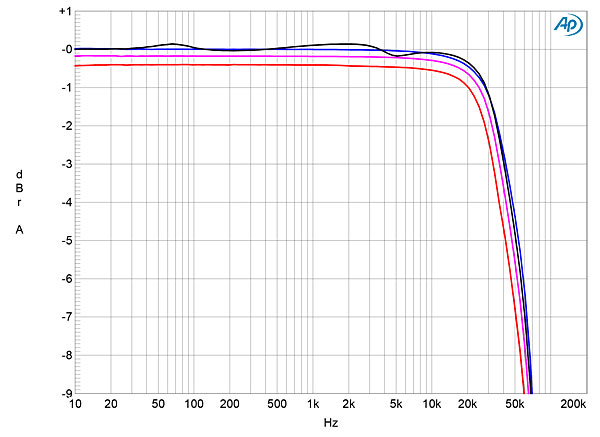
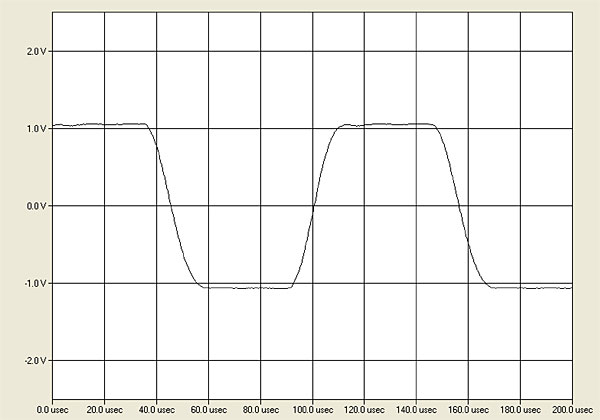
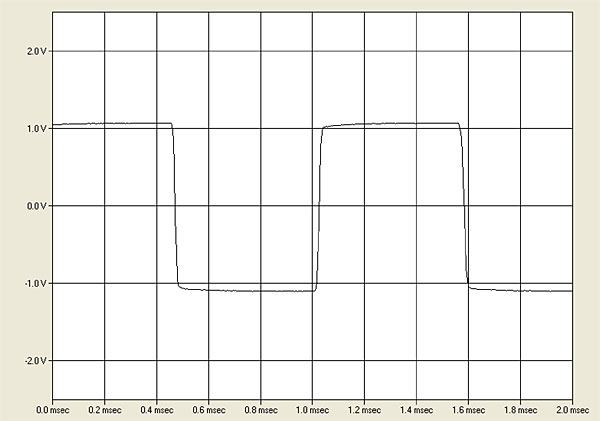
The JA200 Mk.II's unweighted, wideband signal/noise ratio, ref. 1W into 8 ohms, was an excellent 80.3dB, improving to 92.4dB when A-weighted. AC-supply harmonics were relatively low in level (fig.4). This is a quiet amplifier, with no evidence in its noise performance that it uses tubes.
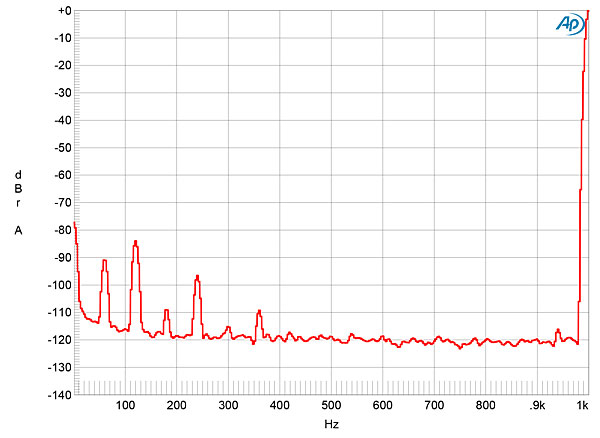
We define clipping as when the percentage of THD+noise in an amplifier's output reaches 1%. While Jadis specifies the JA200 Mk.II's output power as being 160 or 170W, when I plotted how the THD+N percentage varied with power into 8 ohms (fig.5), I measured just 39W (15.9dBW) at 1% THD+N, a shortfall of 6dB. Even at 3% THD+N the power was only 0.5dB higher, at 44W. When I repeated the measurement into 4 ohms (fig.6), the Jadis delivered 70W at 1% THD+N and 84W at 3%. The amplifier began to approach its specified power output only into 2 ohms (fig.7), where the 1% power was 99.7W and the 3% power 140W.
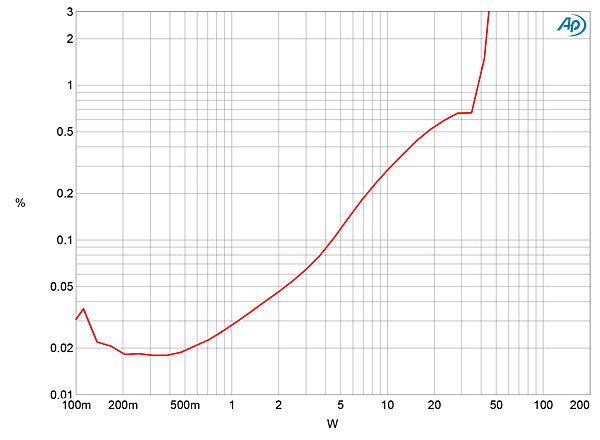
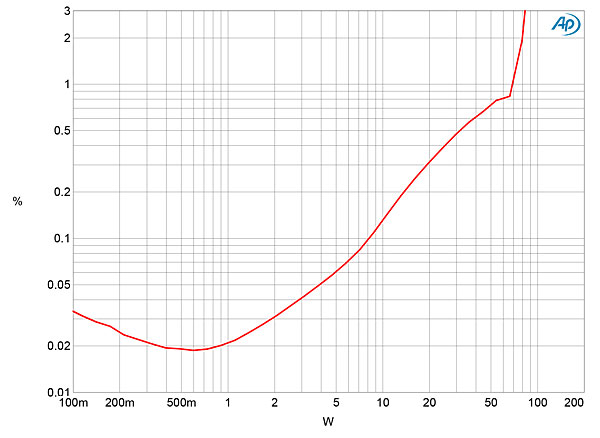
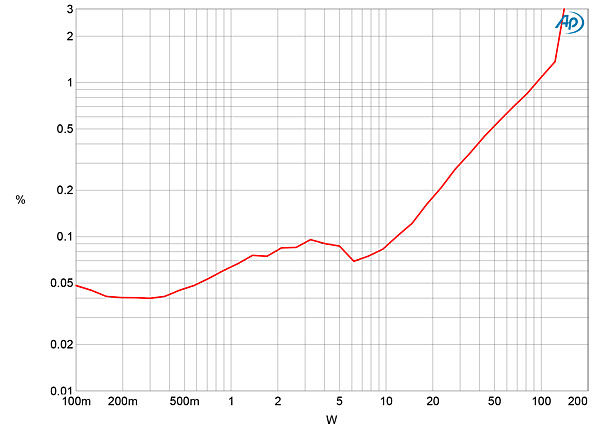
I was puzzled by these results, as they suggest that the internal strapping of the Jadis's output transformer had been set up not for "4–8 ohms," as the distributor's representative had assured Jason Serinus, but for a lower impedance. Indeed, when I removed the JA200 Mk.II's bottom plate and compared the connections with those printed in the manual, it became apparent that this sample of the amplifier had been optimized for a 1 ohm load. I don't have a 1 ohm test load, but I suspect that, as set up before it was sent to us for review, the JA200 Mk.II will deliver its specified power into 1 ohm. And as Jason's Wilson speakers have a minimum impedance of just under 2 ohms at 86Hz, with a demanding combination of 3.6 ohms and –43° phase angle at 54Hz, having the Jadis amplifier strapped for 1 ohm operation was probably a good idea.
Fig.8 plots the Jadis's THD+N percentage against frequency at 4V, which is equivalent to 2W into 8 ohms, 4W into 4 ohms, and 8W into 2 ohms. The THD is very low at low and middle frequencies into 8 and 4 ohms, but is higher into 2 ohms. However, note the big rise in THD in the treble, over 0.1% above 5kHz and reaching 3% just below 20kHz. The distortion signature primarily comprises the relatively benign third harmonic (fig.9), though some second and fifth harmonics are also present (fig.10).
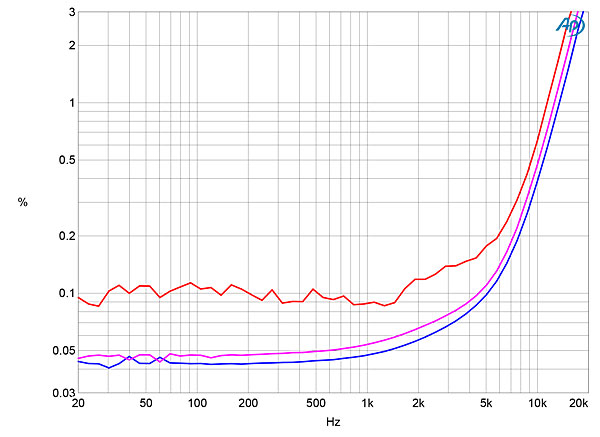
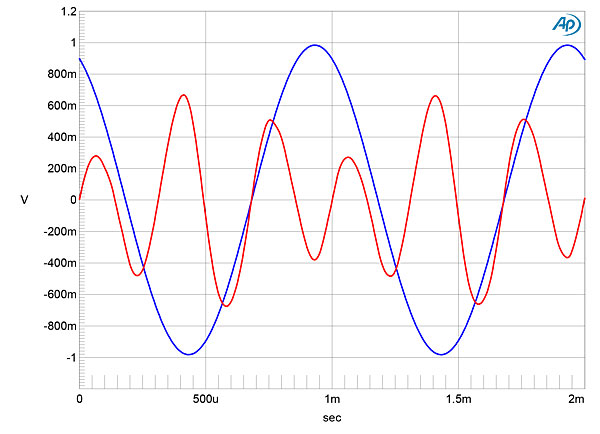
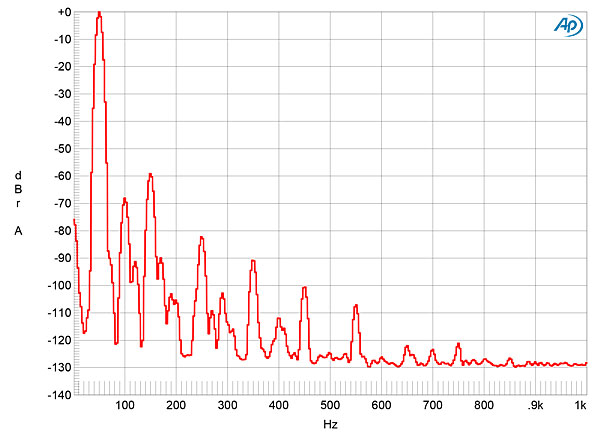
It was only when I examined the JA200 Mk.II's intermodulation distortion that I ran into trouble. My intermodulation test signal comprises two tones, equal in level, at 19 and 20kHz. With the Jadis's significant decrease in linearity at the top of the audioband, the intermodulation products are rising above 0.3% at levels as low as 2W into 4 ohms (fig.11). At 10W into 4 ohms (not shown), the difference product at 1kHz lay at –34dB (2%), and the higher-order products at 18 and 21kHz were each close to 10% in level. To be fair, the Mk.II JA200 is actually no worse in this respect than the original version we reviewed in 1993. Fortunately, music rarely has high levels of energy at the top of the audioband, so this behavior might go unnoticed much of the time. But what was acceptable almost a quarter-century ago is no longer acceptable today, I feel.
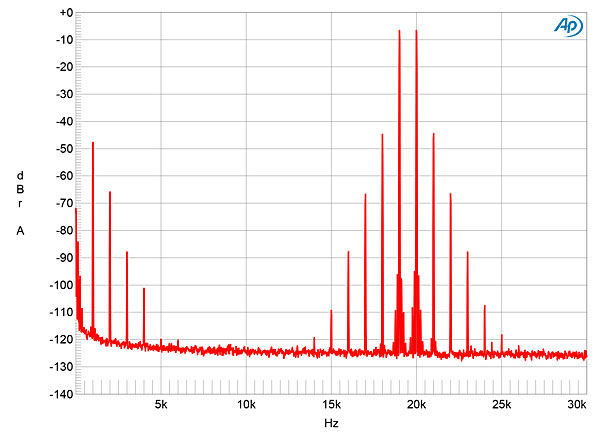
When I removed the Jadis JA200 Mk.II's bottom plate to check its output-transformer wiring, I was impressed by the high standard of construction: hardwired throughout, with meticulous layout of the circuit components, and an output transformer of obviously superb quality. The amplifier's measured performance is also excellent in most ways. But I just can't get away from that poor linearity at high frequencies.—John Atkinson

... Harman-Kardon Citation II amps, run in mono for 120W/ch, instead of these any day.

I'm outa touch, I'd thought that the bigger Wilsons all had Servo Woofers. Hmm How do they get away without Woofer control ? Of course a Solid State Amp's dampening is mandatory.
Mr.JVS ends up confirming the Pass excellence, like everyone else.
Tony in Michigan
ps. there is an Engineering document covering Audio Output Tube spacing, I think the minimum gap is far greater than glass to glass ( which looks like a Submarine Missile Launch arrangement )

... is rather tightly packed, but there are perforations in the chassis between the tubes to promote air flow.
https://i1.wp.com/i1190.photobucket.com/albums/z446/sthull/CES13/Part1/CT6A6117.jpg?resize=640%2C427

Egads,
Audio Research looks like ( a ) Schiit !
I'll pass.
It seems a bit outrageous in appearance, like a razor wire tattoo ( around the neck ) kinda thing.
Maybe I'm too Old-School to appreciate the lack of Gage.
The way Woo Audio does exposed glass Tubes in their FireFly is stunningly beautiful, isn't it?
I'm a tube fan, especially in Microphones used for Studio Recordings of Vocals. Tubes in Pre-Amps are one of my favorite things. Tubes in Amps have never performed well for me, with the ( only ) exception being the Conrad-Johnson MV-45a driving MG2 Maggies with Music Hose MIT750.
The Tune Audio Avaton Horn Loudspeaker gets Tube amplification and is flat out addictive. ( leave your financials in the Safe or you'll kill yourself to own it )
Exposed tube are silliness from trendy MeToo's
Tony in Michigan
ps. William Z is turning over in his vault.

No Servo Woofers ? new
Submitted by tonykaz on February 2, 2018 - 1:59pm
"I'm outa touch, I'd thought that the bigger Wilsons all had Servo Woofers. Hmm How do they get away without Woofer control ? Of course a Solid State Amp's dampening is mandatory."
The reviewers Wilson Alexia are full range passive (no active bass) but that bass can go as low as .9ohm EPDR, I can't see any tube amp even this one getting the very best out of the Alexia's bass, like a big current pumping solid state could do.
Then you can read between the lines of the reviewer.
"the bass was also quite good"
"the bass less full"
"the double basses that give extra urgency and dread to the symphony's opening were hardly audible through the JA200 Mk.IIs. While I can't confirm that this bass shyness was due to the Alexias' impedance dip down low"
Cheers George

... a pair of the Parasound JC-1 amps.
>4kW output into a 1Ω load.
https://www.stereophile.com/content/parasound-halo-jc-1-monoblock-power-amplifier-measurements

I had them way, way back in my pre-Stereophile days. Given that I'm reviewing different equipment each month, as well as reviewing recordings and covering audio shows and teaching about opera and art song and covering concerts [see https://classicalvoiceamerica.org/2018/02/03/a-too-emotional-violin-concerto-played-to-the-hilt/ -- I'm really proud of this review] and plays and writing concert previews and..., auditioning extra products is not so easy.
The good news is, the Wilson Audio Alexia 2 loudspeakers, with a nominal impedance of 4 ohms that dips to 2.8 in the bass, demand less of an amplifier. Review and follow-up of those speakers to come.

... of the Wilson Audio Alexia Series 2.
Will also need to see the phase angle test results to determine just how severe a load might be presented by that speaker.
Parasound versus Pass Labs makes a fascinating comparison. Both John Curl and Nelson Pass have identified certain (and different) aspects of the amplifier distortion spectrum which each seeks to optimize in order to achieve a specific sound quality. JA should try to arrange a simultaneous video interview with these two designers.
Regarding driving the Jadis amp from the dCS DAC, no compatibility issue is evident based upon the specifications. The Jadis has an input impedance of >100kΩ and an input sensitivity of 910mV. The dCS can drive a load as low as 600Ω (with 10kΩ-100kΩ being recommended) and can be set for a 2V full-scale maximum output - more than enough to supply the specified 910mV.

Without utilizing an upstream preamp, you have NOT heard what these amps are capable of. IME, this is always the case with tube amps...and most ss amps as well! Your Dcs DAC was a very poor choice to drive these amps! Strapping the amps for a 1 ohm load, more than likely not the best solution either...the 4-8 ohm strapping would have been more appropriate. I would strongly suggest a follow-up review; this time with a decent preamp upstream and different strapping. I suspect ( strongly) that your opinion of the bass response and the treble concerns would be ameliorated.
Commenting/reviewing mismatched components is not really fair to the component manufacturer under consideration. All IMHO.

a. The choice of strapping was made by the manufacturer and dealer. You may wish to correspond with them. They had the opportunity to request a follow-up review in Manufacturer's Comments, and did not do so.
b. Why is the dCS gear a poor choice to drive these amps and other amps? I have certainly had no problem with any of the SS amps I've reviewed so far. Why are the products mismatched?
FYI, for my next two reviews where a preamp is definitely required, I have been sent a loaner two-piece Lamm preamp. How I'm going to fit it on my rack will be determined shortly.

Ok, you actually brought up a good question...why is the Dcs a poor choice to drive these amps...and not ss amps? I believe it is a poor choice for ALL amps. The Dcs is designed as a DAC...not as a preamp. ( BTW, the ONLY DAC that might qualify SQ wise to drive an amp is the new MSB Select DAC; and as you may know, the Dcs is not in that league at all) A great preamp will have the DRIVE to handle a tube amp...like the Jadis 200Mk2's. The Lamm's you are going to be receiving would certainly qualify in this way. Pair the Lamm's and the Jadis and you would have a much better idea as to what the Jadis can bring to the table. Why are the products mismatched...YOU SHOULD NOT HAVE TO ASK THIS QUESTION!! Pairing a very difficult to drive speaker ( ala WILSON ALEXIA's-- which have a brutal drop in their impedance in the bass) with a tube amp is asking for trouble, IME. You heard what the combo brought about..along with the mismatch of the DAC!! Wake up man...it's horses for courses in our hobby. Would you pair an Apogee Scintilla with a 3 watt flea powered SE amp??? You would IF you do not believe in such a thing as "mismatching'!! --and were inexperienced in the hobby.
BTW, the dealer you mention ( who shall remain unnamed) sold a friend of mine some lower powered Jadis amps for his difficult to drive Gamut speakers( which the very same dealer also sold -- and we are NOT talking about cheap speakers here) Knowing full well the size of my friend's room...Do you think this very same dealer is going to get any of my friend's future business??
If, as you say, the manufacturer has not requested a follow-up, they are making a serious mistake. However, considering they are out of country, that may be a reason. Although, i cannot comprehend why their rep in the US is not all over this!!

I have no answers for absolute statements such as "the ONLY DAC that might qualify SQ wise to drive an amp is the new MSB Select DAC; and as you may know, the Dcs is not in that league at all," and "If, as you say, the manufacturer has not requested a follow-up, they are making a serious mistake."
Have you considered a job as an audio consultant?

I’m not considering a job as an audio consultant, but I may have to consider the job opening for an audio reviewer. LOL.
BTW, have you actually heard the new MSB Select DAC...doesn’t sound like it, otherwise you would understand why the difference can be stated as an absolute.

Submitted by Jason Victor Serinus on February 6, 2018 - 4:29am
"Wilson Audio Alexia 2 loudspeakers, with a nominal impedance of 4 ohms that dips to 2.8 in the bass, demand less of an amplifier."
You had your doubts with this statement also Victor.
""the double basses that give extra urgency and dread to the symphony's opening were hardly audible through the JA200 Mk.IIs. While I can't confirm that this bass shyness was due to the Alexias' impedance dip down low"
Once we've seen the impedance in conjunction with the -phase angle graph in the test, only then we'll see the true EPDR (equivalent peak dissipation resistance) impedance in the bass as seen by the amp, and I will lay money on it, that's it's going to be lower than 2.8ohm
Cheers George

i had a pr of ja80s and later a da60 integrated, both sounded fine but the da60 was one of the most unreliable pieces of gear i ever owned.
hopefully the latest jadis are built to go the distance.

George, I would be willing to bet that your supposition that the Alexia’s drop below 2.8 ohms is going to be spot on!
IMO, utilizing the new Jadis 200 Mk2’s with this particular set-up was a recipe for failure from the beginning....too bad that a good amp is not getting the precise and accurate review that it deserves. Perhaps request a follow up with more appropriate ancillary gear...and another reviewer, lol.